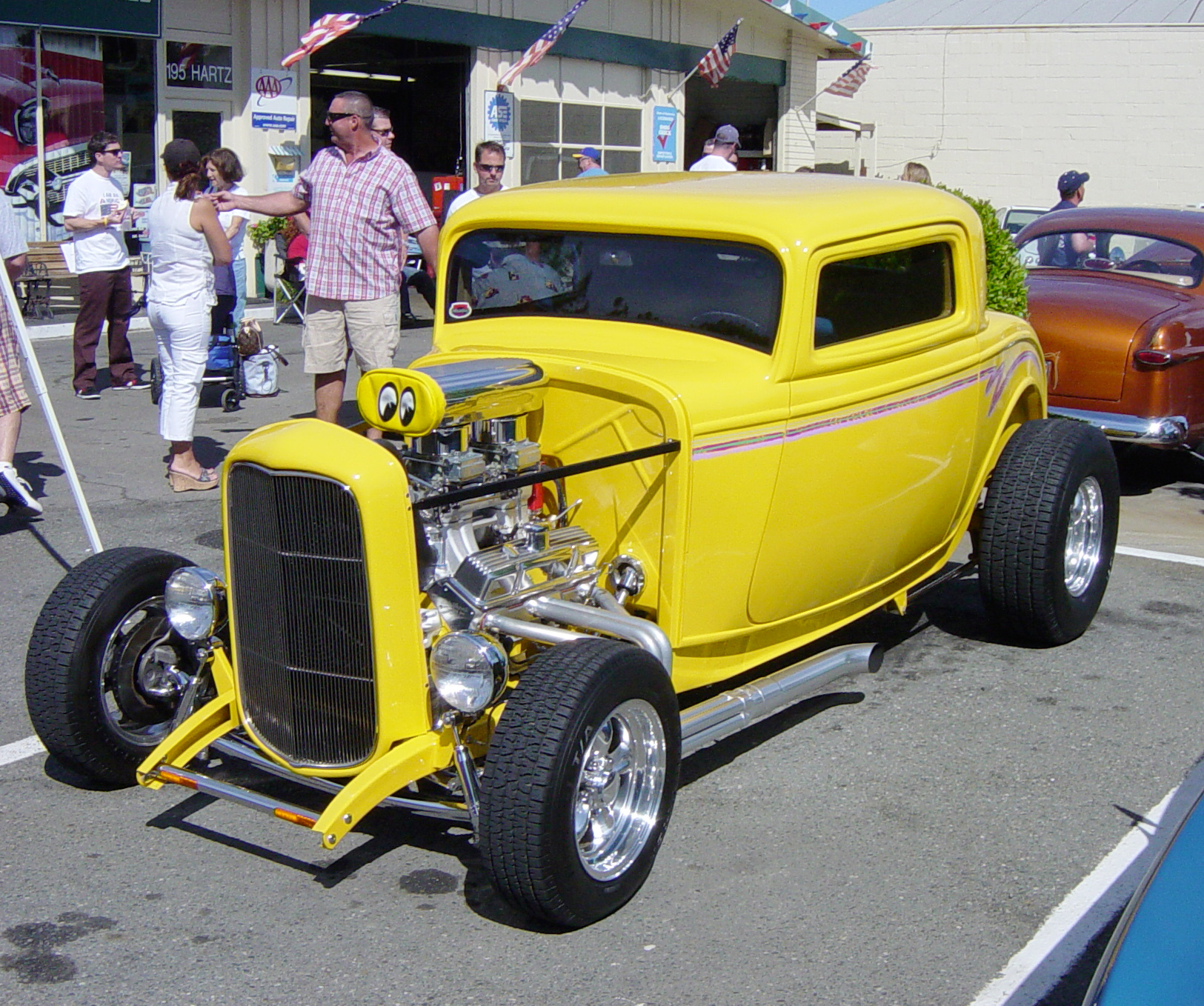
Hot rod
Hot rods are typically American cars that might be old, classic, or modern and that have been rebuilt or modified with large engines optimized for speed and acceleration.[2] One definition is: "a car that's been stripped down, souped up and made to go much faster."[3] However, there is no definition of the term that is universally accepted and the term is attached to a wide range of vehicles.[4] Most often they are individually designed and constructed using components from many makes of old or new cars, and are most prevalent in the United States and Canada.[4] Many are intended for exhibition rather than for racing or everyday driving.[4]
For other uses, see Hot rod (disambiguation).
The origin of the term "hot rod" is unclear. Some say that the term "hot" refers to the vehicle's being stolen. Other origin stories include replacing the engine's camshaft or "rod" with a higher performance version. According to the Hot Rod Industry Alliance (HRIA), the term changes in meaning over the years, but "hot rodding has less to do with the vehicle and more to do with an attitude and lifestyle".[5] For example, hot rods were favorites for greasers.
The term has broadened to apply to other items that are modified for a particular purpose, such as "hot-rodded amplifier".
Etymology[edit]
There are various theories about the origin of the term "hot rod". The common theme is that "hot" related to "hotting up" a car, which means modifying it for greater performance. With regards to the word "rod", one theory is that it means roadster,[6] a lightweight 2-door car which was often used as the basis for early hot rods. Another theory is that "rod" refers to camshaft,[7] a part of the engine which was often upgraded in order to increase power output.
In the early days, a car modified for increased performance was called a "gow job". This term morphed into the hot rod in the early to late 1940s.[8]
The term "hot rod" has had various uses in relation to performance cars. For example, the Ontario Ministry of the Environment in its vehicle emissions regulations refers to a hot rod as any motorized vehicle that has a replacement engine differing from the factory original.[9]
History[edit]
1920s to 1945[edit]
The predecessors to the hotrod were the modified cars used in the Prohibition era by bootleggers to evade revenue agents and other law enforcement.[7]
Hot rods first appeared in the late 1930s in southern California, where people raced modified cars on dry lake beds northeast of Los Angeles, under the rules of the Southern California Timing Association (SCTA), among other groups. This gained popularity after World War II, particularly in California, because many returning soldiers had received technical training.[7][6] The first hot rods were old cars (most often Fords, typically 1910s-1920s Model Ts, 1928–31 Model As, or 1932-34 Model Bs), modified to reduce weight. Engine swaps often involved fitting the Ford flathead V8 engine (known as the "flatty") into a different car, for example, the common practice in the 1940s of installing the "60 horse" version into a Jeep chassis.
Typical modifications were removal of convertible tops, hoods, bumpers, windshields, and/or fenders; channeling the body; and modifying the engine by tuning and/or replacing with a more powerful type. Wheels and tires were changed for improved traction and handling. Hot rods built before 1945 commonly used '35 Ford wire-spoke wheels.[10]

![Deuce coupe featuring '32 grille shell, original headlights, chrome dropped I-beam axle and tube shocks. Note stock frame rails, disc brakes, Lakester pipes[29][30]](http://upload.wikimedia.org/wikipedia/commons/thumb/4/49/Deuce_dropped_tube_axle.JPG/120px-Deuce_dropped_tube_axle.JPG)


















